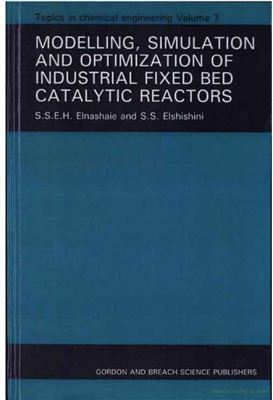CRC Press. 1994. 478p
In the last two decades impressive advances have been made toward the understanding and quantitative description of the kinetics. Despite these advances, however, the use of mathematical modelling of gas-solid catalytic reactors in industry is still limited. By consolidating progress in the understanding of catalytic processes, this book applies these fundamental advances to the development of models for design, simulation and optimization of industrial reactors. Paying particular attention to the verification of the developed models against industrial data, these models are used to optimize the performance of many practical reactor cases. Using a systems approach for the development of the different components and the resulting overall models, the book is easy to read and gives an insight into the behaviour of these complex industrial systems. In addition, the practical relevance of bifurcation, instability and chaos to industrial reactors is briefly discussed.
In the last two decades impressive advances have been made toward the understanding and quantitative description of the kinetics. Despite these advances, however, the use of mathematical modelling of gas-solid catalytic reactors in industry is still limited. By consolidating progress in the understanding of catalytic processes, this book applies these fundamental advances to the development of models for design, simulation and optimization of industrial reactors. Paying particular attention to the verification of the developed models against industrial data, these models are used to optimize the performance of many practical reactor cases. Using a systems approach for the development of the different components and the resulting overall models, the book is easy to read and gives an insight into the behaviour of these complex industrial systems. In addition, the practical relevance of bifurcation, instability and chaos to industrial reactors is briefly discussed.

